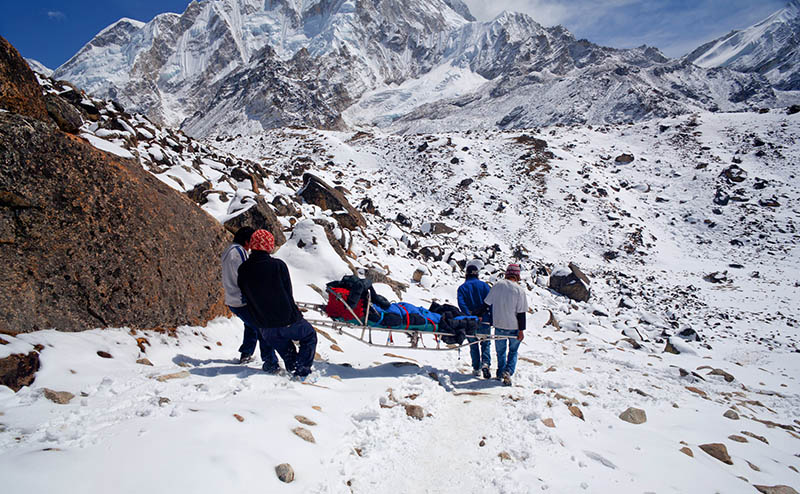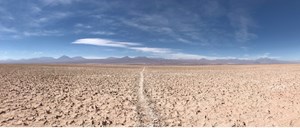
Wilderness Medicine in Practice: Performing Patient Care in the Himalayas
Reena Sheth
OMS-4, Class of 2026
Medical Student Education Tutor
Doctor of Osteopathic Medicine (D.O.) Candidate
NSU Dr. Kiran C. Patel
College of Osteopathic Medicine - Fort Lauderdale Campus
The crisp crunch of my boots in the gleaming spring snow of the mountains will always be my favorite sound. After 42 days of backpacking through the Greater Himalayas on an outdoor education course, my senses felt in tune with the environment around me.
As striking as the white snow was, it was also dangerous. The spring ice was starting to melt and as hiking lead, I warned my team of the challenges the snow could bring. Consequently, I suggested we approach each steep snow-covered drainage with caution, ice pick in hand, and an awareness of our ability to self-arrest, a technique used to stop oneself in the snow. I led my team across the drainage, cutting steps in the snow for each of them to follow. As I reached the other side, I turned around to see my friend Cam tumbling downwards grasping at the snow to stop himself. “ARREST CAM! SELF ARREST!” I yelled. I could only watch, and hope Cam would remember to dig his elbows and knees hard in the snow to stop himself from falling down any further. After he stopped himself halfway between the group and the gushing river, I slowly made my way to Cam.
His eyes wide and hands shaking, looking at me crying, “I don’t think I can walk… my knee… it really hurts.” I looked at Cam to comfort him and assure him we would get through this together. With the skills we had learned from our Wilderness First Aid course, I had Cam throw his arm around my shoulder and attempt to stand. His left leg gave out the minute he stood up and we both fell to the ground. I asked one member to start a SOAP note detailing the time, scenario, and symptoms Cam was experiencing. Although I was certified, I wasn’t trained for every scenario that could happen, and especially not this one.
Safely on solid ground, I formulated a plan with input from my team members to get all of us to base camp with one man down. To adapt to our new situation, I assigned roles based on each member’s strengths and weaknesses. We sent two hikers as a “runner group” to get help from the instructors ahead of us. The remaining two, including myself, decided to perform a thorough patient assessment on Cam to determine his walking capabilities. Ultimately, we decided Cam’s injuries were too severe for him to walk without assistance. Thus, we fashioned Cam two crutches made of large branches, using the environment as a tool to help provide emergency care to Cam. We also split up his belongings from his pack into our packs so he could hike without an extra 50 pounds of weight on his back. Eventually, we turned what was supposed to be a two-hour hike into a nine-hour journey, with everyone reaching the campsite safely by nightfall. Despite the circumstances, our improvisation and planning helped us save Cam and prevent any serious injury.



